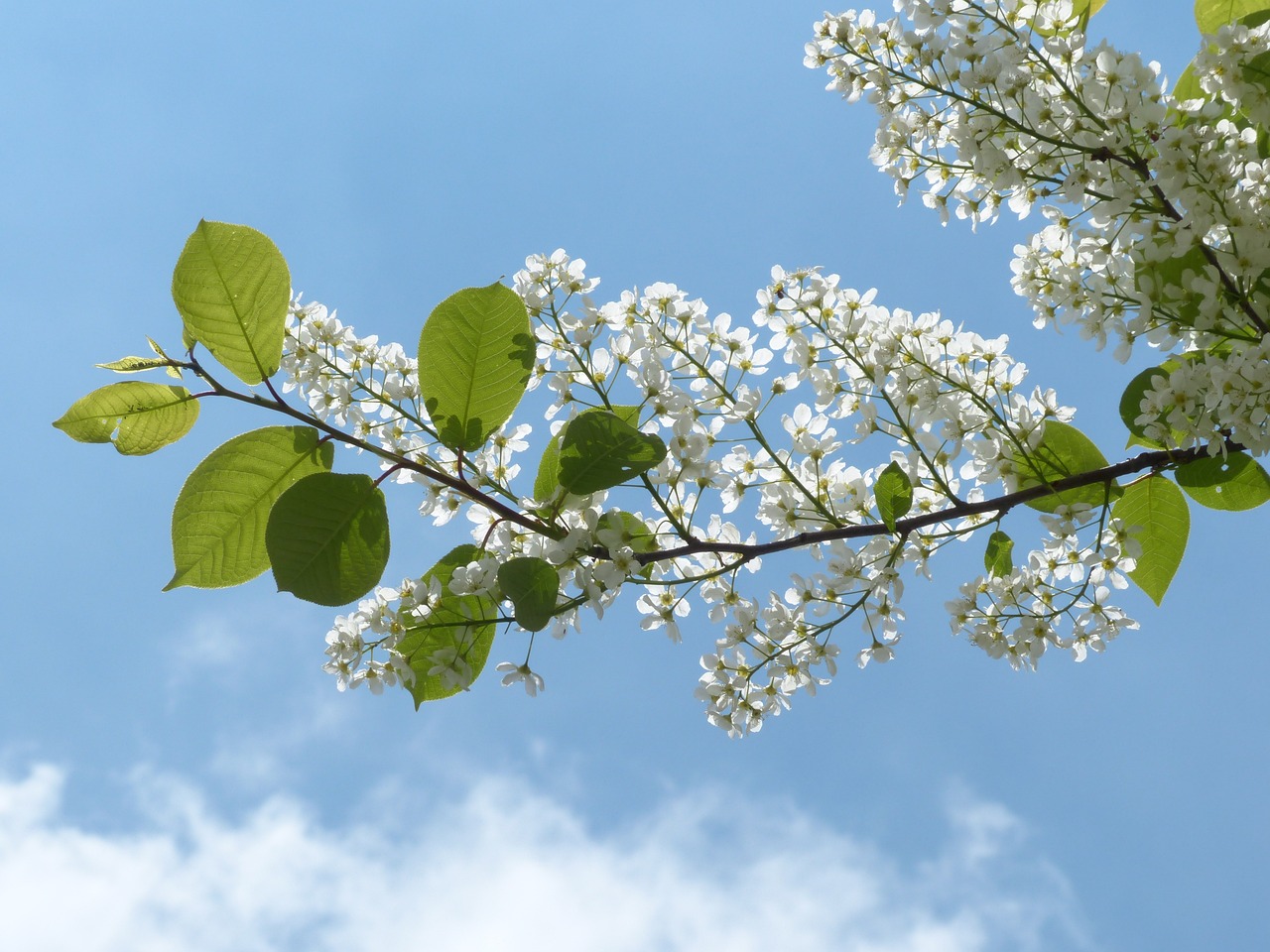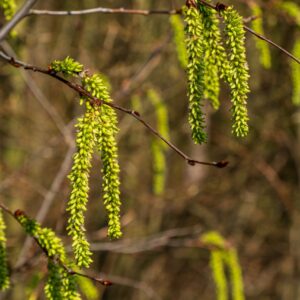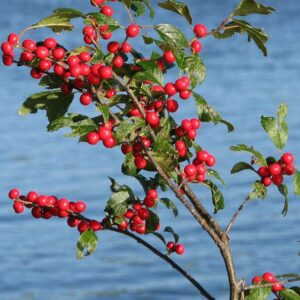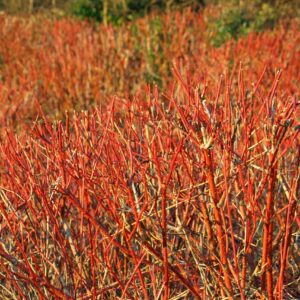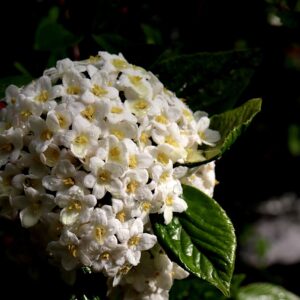Prunus virginiana, commonly known as the chokecherry, is a deciduous shrub or small tree native to North America. It is well-regarded for its ornamental qualities, edible fruit, and ecological benefits. Chokecherry is a versatile plant with ornamental appeal, useful fruit, and ecological benefits, making it a valuable addition to many gardens and natural landscapes.
Appearance:
Size: Chokecherry can grow as a shrub or a small tree, typically reaching heights of 10-30 feet (3-9 meters) with a similar spread. In some cases, it may grow taller, up to 40 feet (12 meters), depending on conditions and variety.
Leaves: The leaves are oval to elliptical, about 2-4 inches (5-10 cm) long, with a pointed tip and finely serrated edges. They are dark green and have a glossy appearance. In the fall, the leaves turn shades of yellow to reddish-orange, adding seasonal color.
Flowers: In spring, chokecherry produces clusters of small, white to pinkish flowers. These flowers are arranged in dense, upright racemes that can be 4-6 inches (10-15 cm) long. Each flower has five petals and is typically around 1/4 inch (0.6 cm) in diameter. The flowering period is often late spring to early summer.
Fruit: The fruit is a small, round drupe, typically about 1/4 inch (0.6 cm) in diameter. It starts out green, turning dark red to black as it matures. The fruit is known for its astringent taste, which gives rise to the common name “chokecherry.” Despite the tartness, the fruit is used in various culinary applications, including jams, jellies, and wines.
Bark: The bark is typically smooth and reddish-brown to grayish-brown. It may develop some fissures or horizontal lenticels as it matures.
Habitat: Chokecherry is adaptable and can grow in a variety of habitats, including woodlands, prairies, and along stream banks. It prefers well-drained soil and can tolerate a range of soil types, from sandy to clayey. It is hardy in a variety of climates, making it suitable for many regions across North America.
Uses:
Ornamental: Chokecherry is valued for its attractive flowers, fruit, and fall foliage. It can be used in landscaping as a specimen tree, in hedges, or in naturalized plantings.
Culinary: The fruit, despite its tartness, is used in cooking and food preparation. It can be made into jams, jellies, syrups, and even wines. However, it’s important to note that the seeds contain cyanogenic compounds, so the fruit should be prepared properly to avoid any health risks.
Ecological: Chokecherry provides valuable food for various wildlife, including birds, mammals, and insects. The dense foliage also offers shelter for smaller creatures.
Care:
Pruning: Pruning is best done in late winter or early spring before new growth begins. Regular pruning helps maintain the shape and health of the tree or shrub.
Watering: Chokecherry is fairly drought-tolerant once established, but regular watering during dry periods helps ensure robust growth and fruit production.
Fertilizing: Applying a balanced, slow-release fertilizer in early spring can promote healthy growth and flowering.

